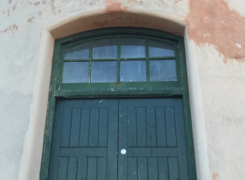The Australian Government Actuary’s second report on strata pricing in north Queensland says high premiums are related to claims experience, but concedes lack of competition may play a small part.
The business is reasonably profitable for insurers, rather than highly profitable.
The report finds strata residents in Brisbane and Gold Coast, Sydney, Melbourne and Adelaide pay about 20% of north Queensland premium rates, and Darwin residents pay about 40%.
Northern WA premiums are “broadly comparable” with north Queensland, based on limited data available.
Queensland federal MP Warren Entsch says the report proves insurance market failure in the north.
“Yes, we get cyclones in north Queensland, but there are floods, fires and storms in these southern cities, which carry their own significant level of risk, and it’s certainly not one-fifth of ours,” he said.
Mr Entsch told insuranceNEWS.com.au there are few strata buildings that do not comply with the latest building code, and the report provides further evidence to support government intervention.
But Insurance Council of Australia CEO Rob Whelan says the report shows the north Queensland market is fair and operating properly.
“It concludes that insurers are not gouging – they are providing appropriate risk-priced products after a period of underpricing that reflects north Queensland’s high exposure to cyclones compared with other markets.”
The investigation by Government Actuary Peter Martin of north Queensland strata prices in 2012 found premiums had risen up to several-hundred per cent in previous years due to historical underpricing, reinsurance costs and recent disaster losses.
Its second report compares north Queensland strata with other regions and uses a timeframe of 2005 to last year, compared with 2006 to 2012 in the earlier report.
Mr Martin says the second study confirms the findings from 2012, and the longer timeline, which captures Cyclone Larry, provides “further evidence that historical premium rates were simply too low for the risk that was being carried”.
“In my judgement, most of the price variation between north Queensland and the east-coast capitals can be attributed to the relatively lower risk in the east-coast centres compared with north Queensland,” he says.
“Specifically, these other centres are not exposed to cyclone risk in the same way as north Queensland.”
But he finds “a reasonable likelihood that a small part of the difference” can be attributed to the absence of competitive pricing pressure in north Queensland.
The report says there are no barriers to other insurers entering the market.
National Insurance Brokers Association (NIBA) CEO Dallas Booth says the report supports the view that consumers need expert advice from brokers rather than a comparison website, as proposed by the Government.
“Comparison websites might be suitable if the risks are very similar, and the policies are the same,” he said. “That is certainly not the case for property risks in north Queensland.”
The Government has proposed encouraging foreign insurers to enter the market but Mr Booth says experience has shown they often enter with low prices “only to then exit the market after a relatively short time once they learn that they have underpriced their business”.
This destabilises the market, distorts pricing and leads to consumer disappointment and criticism of the insurance industry.
Mr Whelan says new insurers are entering the market and finding new ways to provide cover.
“The greatest risk for governments in market intervention is reduced competition and, consequently, further negative pricing pressures for consumers.”








